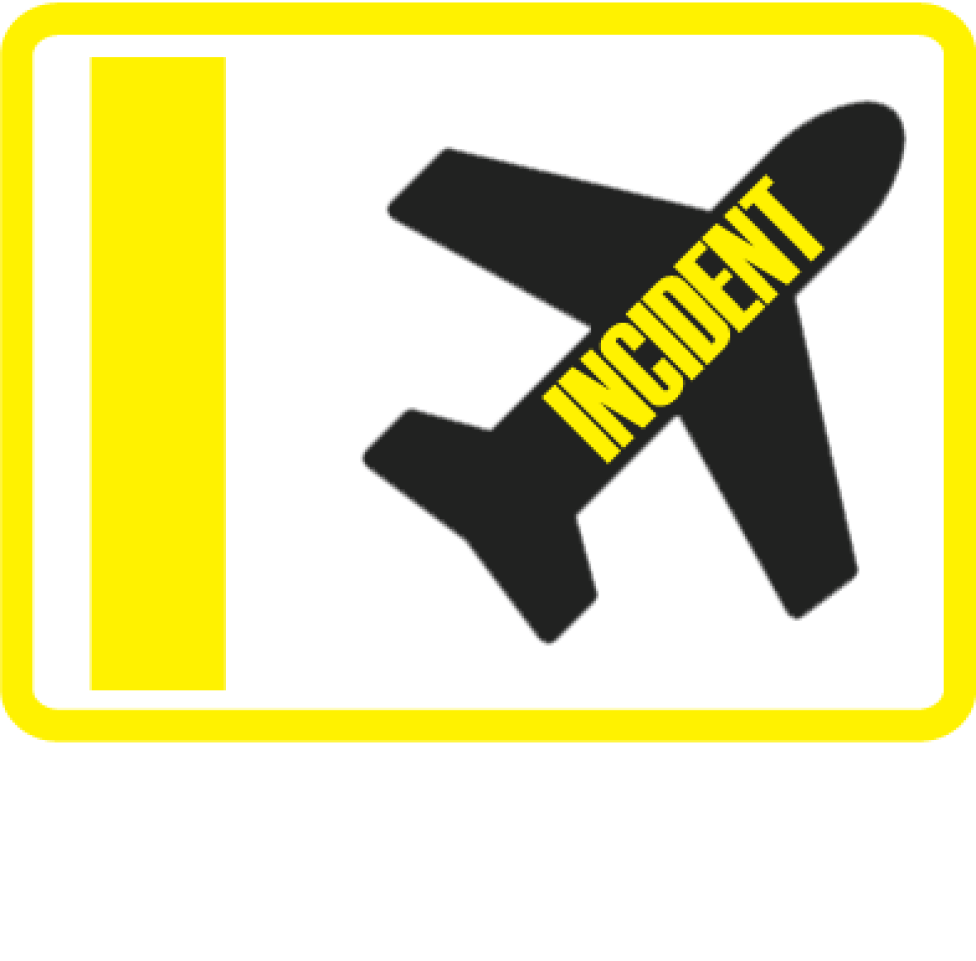Argentinas A343 at Buenos Aires on Oct 14th 2013, tail scrape on landing
An Aerolineas Argentinas Airbus A340-300, registration LV-CEK performing flight AR-1133 (dep Oct 13th) from Madrid,SP (Spain) to Buenos Aires Ezeiza,BA (Argentina) with 300 passengers and 11 crew, landed on Ezeiza Airport's runway 11 at 06:06L (09:06Z), however its tail contacted the runway surface. The aircraft rolled out without further incident, the passengers disembarked normally. The aircraft substained minor damage.
Argentina's JIAAC opened an investigation into the occurrence rated an incident.
The incident aircraft is currently still on the ground but expected to return to service soon. The aircraft had departed Madrid on schedule and diverted to Rio de Janeiro,RJ (Brazil) for a stop of about 80 minutes and arrived in Buenos Aires with a delay of about 2 hours.
On Oct 22nd 2013 the French BEA reported in their weekly bulletin that following a normal landing the aircraft encountered an abnormal pitch attitude during the roll out. The aircraft sustained minor damage. The occurrence has been rated a serious incident and is being investigated by JIAAC.
On Jul 23rd 2014 Argentina's JIAAC released their final report in Spanish concluding the probable causes of the incident were:
During an international passenger flight, while performing an automatic landing, the autopilot disconnected just during de-rotation causing a sudden pitch up and the tail of the aircraft contacting the runway surface due to the combination of following:
- an involuntary movement of the sidestick, that exceeded the threshold permitted for autopilot operation and thus caused the disconnection of the autopilot
- incorrect control inputs during de-rotation that did not lower the nose without delay when manual control became necessary following main gear touch down
- following touchdown and pitch up manual control inputs to limit the pitch attitude were not efficient and sufficiently accurate
- lack of verbal call outs like "Pitch" when the aircraft reached a high pitch attitude on the ground
- the maximum pitch attitude while on the ground was exceeded
These factors are attributable to the following root causes:
- Extension of crew duty time as set forth by current regulations could have created a situation of additional fatigue affecting the execution of the extensive procedure
- lack of experience in performing the autoland procedure in real situations, that could have caused the habit of raising the nose prior to touchdown or override the sidestick
The captain (58, ATPL, 19,600 hours total experience, 350 hours on type) was assisted by a first officer (63, ATPL, 15,900 hour total, 450 hours on type), two observers (53, ATPL, 4,505 hours total, 300 hours on type and 29, ATPL, 2,600 hours total, 800 hours on type) were on the flightdeck as well. The crew planned for an autoland on Ezeiza's runway 11, the final approach and touch down was normal. About 2 seconds after main gear touch down the autopilot disconnected and the nose sharply rose reaching more than 11 degrees nose up. The crew noticed the abnormal situation and applied corrective control input manually de-rotating the aircraft and applying brakes, the crew of another aircraft waiting for departure reported the aircraft had sustained a tail strike.
The JIAAC reported that according to the flight data recorder the aircraft touched with +7 degrees nose up, the pilot inadvertently put pressure onto the sidestick producing a 16.9 degrees deflection backwards (85% of aft travel), this caused the autopilot to disconnect. The aircraft responded to the control input and sharply increased the pitch to above 11 degrees nose up. Following the autopilot disconnect the pilot attempted to counter the nose up movement, the inertia and momentum of the aircraft movement as well as loss of effectivity of controls could not prevent the attitude to exceed the limit on the ground (10.1 degrees nose up with main gear compressed). There had been no pitch call from the pilot monitoring when the nose went above 7.5 degrees nose up.
The JIAAC analysed that with the decreasing speed the control surface efficiency was insufficient to stop the nose up movement initiated by the nose up command at touch down. The FCOM clearly advises to not apply nose up commands that could introduce a situation that did occur on the incident flight.
The JIAAC analysed that the maneouver showed that the pilot instinctively disagreed with the actions of the autopilot. This feeling led him to provide nose up inputs which disconnected the autopilot.
Metars:
SAEZ 141100Z 26002KT 5000 BR NSC 16/15 Q1017
SAEZ 141027Z 26001KT 3000 BR NSC 15/13 Q1017
SAEZ 141027Z 26001KT 3000 BR NSC 15/13 Q1017
SAEZ 141000Z 18002KT 1500 R11/0400N MIFG BR NSC 14/13 Q1016
SAEZ 140900Z 15002KT 2000 R11/0600D MIFG BR NSC 14/13 Q1015
SAEZ 140800Z 18002KT 4900 R11/0600D MIFG BR SCT011 BKN200 14/13 Q1015
SAEZ 140700Z 07002KT 9999 SCT011 BKN200 17/15 Q1015
SAEZ 140600Z 07004KT 9999 SCT010 OVC200 16/15 Q1015
SAEZ 140500Z 05004KT 9999 SCT008 OVC200 16/15 Q1014
SAEZ 140400Z 05005KT CAVOK 17/15 Q1015
http://avherald.com/h?article=46a1f078














Komentarze